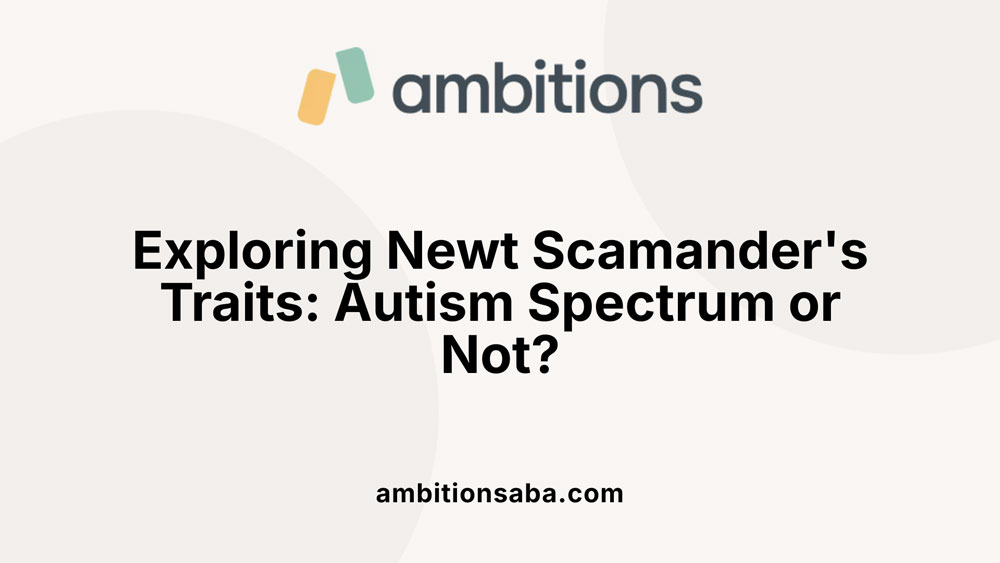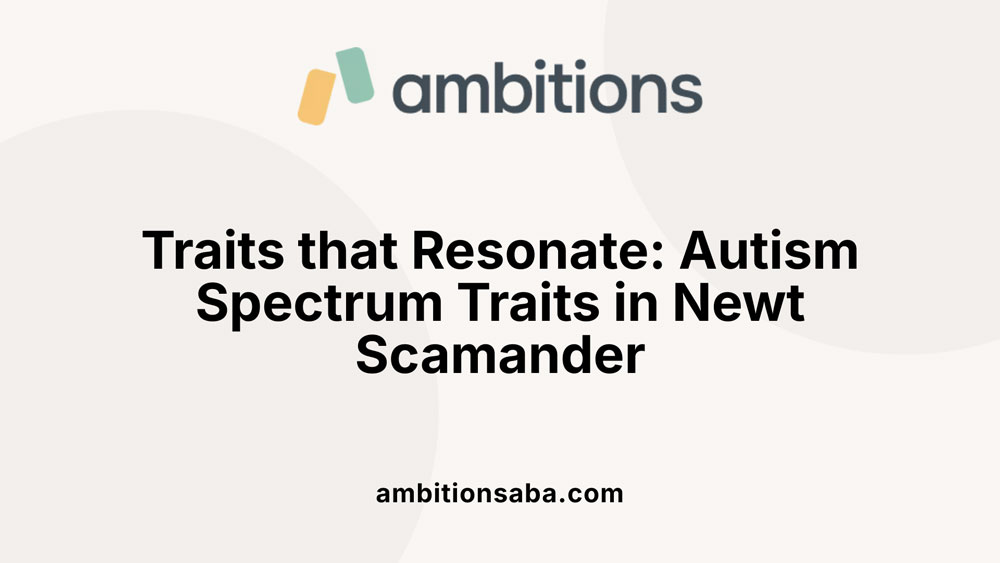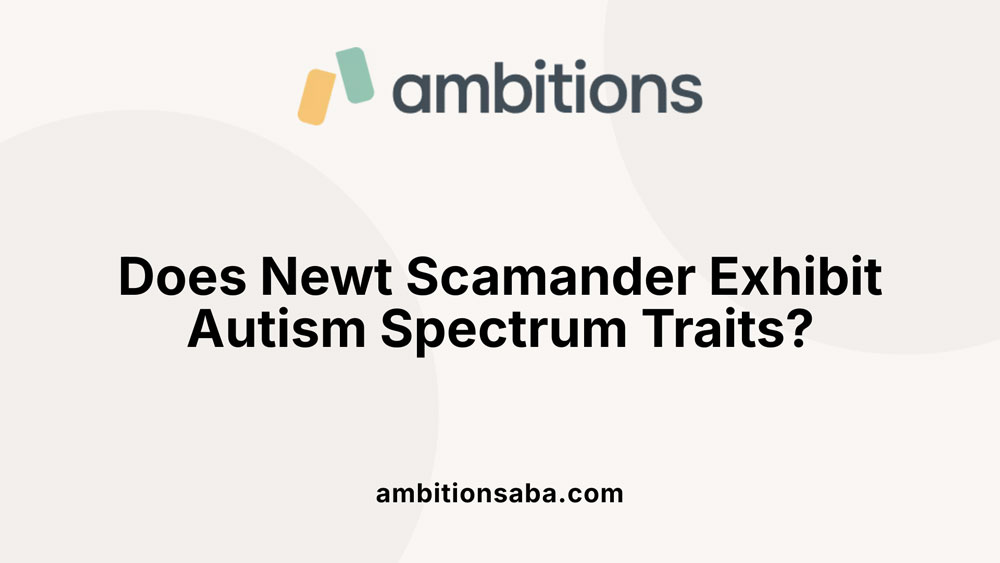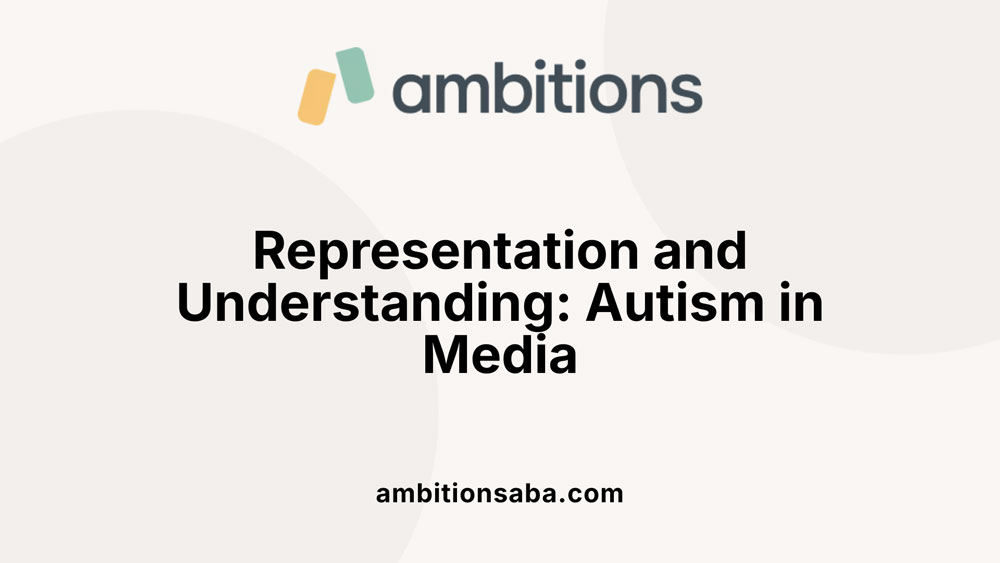Unraveling the Complexities of a Beloved Character
Newt Scamander, the magnetic magizoologist from the 'Fantastic Beasts' series, has captivated audiences with his unique personality traits and love for magical creatures. While the series itself does not explicitly assign a diagnosis to Newt, various characteristics have led fans and analysts alike to speculate about whether he might exhibit traits associated with autism spectrum disorder. This article delves into the behaviors of Newt Scamander, considers insights from media discussions, and explores what his traits might suggest about his place on the autism spectrum.
Media Discussions and Interpretations

Analyzing Newt’s traits, many note his challenges with social interactions and adherence to rules, which could align with certain autism spectrum characteristics. He often fidgets, taps his wand, and rocks, suggesting repetitive behaviors or sensory sensitivities. His manner of speaking, soft and monotone, also resonates with traits seen in some individuals on the spectrum.
J.K. Rowling has acknowledged the possibility of Newt having autism in her statements, mentioning that he was never officially diagnosed but that she knows people and animals like him. This acknowledgment has sparked some discussion online, but as of now, mainstream media has not dedicated significant analysis or official commentary to framing Newt’s behavior explicitly as autistic.
Overall, media coverage remains cautious and mainly interpretative. There is no widespread or official confirmation that the series or its creators intended to portray autism. Interpretations hinge largely on fans' perspectives and broader conversations about representation. These discussions highlight the importance of accurate and respectful portrayals, emphasizing that while Newt’s traits may resemble autistic behaviors, they are not explicitly labeled as such within the media.
Aspect of BehaviorObservationPossible InterpretationSocial interactionDifficulty maintaining eye contact and engaging in conversationsTraits associated with autism spectrum disordersSpeech patternSoft, monotone voiceCan be typical of individuals on the spectrumRepetitive behaviorsFidgeting, tapping wand, rockingCommon autism traitsInterestsObsessive interest in magical creaturesStrong attachment characteristicChallenges with rulesConfusion and stress over lawsReflects nuanced difficulties related to understanding social rules
Traits of Newt Scamander That Mirror Autism Spectrum Characteristics

What are some character traits of Newt Scamander that suggest he might be on the autism spectrum?
Newt Scamander exhibits several behaviors that parallel common traits of individuals on the autism spectrum. He struggles with social interactions, often showing difficulty making eye contact and understanding social cues. His communication style is characterized by a subdued voice and monotone speech, which can be typical for some on the spectrum.
Difficulty with social interaction
Newt often appears socially awkward and has trouble engaging in typical social behaviors, despite trying his best. He experiences stress when uncertain about rules or laws, adding to his social challenges. His genuine efforts to connect contrast with his social difficulties, highlighting a realistic portrayal.
Repetitive behaviors and mannerisms
He displays behaviors like fidgeting, tapping his wand, and rocking back and forth. These repetitive actions serve as comfort mechanisms and are common among people with autism.
Intense focus on interests
Newt's profound attachment to magical creatures and his detailed knowledge of them showcase a strong focus on specific interests. This intense interest provides him with a sense of identity and purpose.
Difficulty with eye contact and social cues
He often avoids eye contact and struggles to interpret social interactions. These challenges resonate with common autism characteristics, emphasizing his unique way of perceiving the world.
Unique communication style
Speaking in a soft, monotone voice, Newt’s communication differs from typical social interactions, further illustrating traits associated with autism.
This portrayal is supported by the author's acknowledgment that Newt was never officially diagnosed but clearly exhibits many behaviors aligned with autism spectrum traits. The film and character encourage understanding and acceptance of individuals who may share these qualities, promoting a message of self-acceptance.
TraitDescriptionAutism Spectrum ConnectionSocial DifficultiesChallenges in social interactions and cuesCommon in autismRepetitive BehaviorsFidgeting, rockingTypical behaviorsFocused InterestsDeep attachment to magical creaturesCharacteristic of autismCommunication StyleSoft, monotone voiceOften observed in autismEye ContactAvoids or struggles with eye contactCommon autistic trait
Understanding these traits in Newt can promote empathy and recognition of diverse ways people experience and navigate the world, especially within the context of autism.
Newt Scamander's Traits and Autism Spectrum Connection

Does Newt Scamander exhibit traits associated with autism spectrum disorder?
Eddie Redmayne, who portrays Newt Scamander, has expressed that the character exhibits behaviors that align with being on the autism spectrum. Redmayne specifically mentions traits consistent with Asperger's syndrome, a form of autism. Although the term 'Asperger's' was not commonly used during Newt's fictional lifetime, modern understanding recognizes these behaviors as part of the broader autism spectrum.
Newt's mannerisms like fidgeting, tapping, rocking
Newt is often seen engaging in repetitive movements such as fidgeting, tapping his wand, and rocking back and forth. These actions are typical of individuals on the autism spectrum, reflecting comfort or self-stimulation. His constant engagement with magical creatures also indicates a preference for structured, predictable interests.
Soft and monotone speech patterns
He tends to speak in a soft, monotone voice, which can be characteristic of many on the autism spectrum. This subdued vocal style often accompanies his subdued emotional expression, making it easier for him to communicate in his own unique way.
Attachment to magical creatures as a special interest
One of Newt’s most significant traits is his deep attachment and fascination with magical creatures. This intense interest aligns with the common autism trait of having a focused passion or hobby, which provides him comfort and meaning.
Resonance with Asperger's syndrome
These behaviors collectively suggest a resemblance to Asperger's syndrome, which is part of the autism spectrum. The film's portrayal of Newt as someone misunderstood and passionately dedicated to his interests resonates with themes of societal acceptance and self-identity.
Additional insights
J.K. Rowling has openly acknowledged the possibility of Newt having autism, tweeting that she knows real people and animals like him. Her depiction emphasizes that being different can be a strength rather than a limitation.
Canon, Characterization, and Autism
The depiction of Newt Scamander in the 'Fantastic Beasts' series captures a nuanced personality that many interpret as reflective of autism spectrum traits. Although J.K. Rowling, the creator of the character, has stated that Newt was never officially diagnosed with autism, she acknowledged that he shares similarities with people and animals she knows, which suggests a deliberate crafting of his mannerisms and behaviors.
Officially, Newt is not portrayed as autistic; there is no label or diagnosis provided within the canon of the books or films. However, his behaviors—such as avoiding eye contact, speaking in a subdued and monotone voice, and exhibiting repetitive movements like fidgeting and rocking—align with common characteristics associated with autism spectrum disorder. These traits are depicted realistically, emphasizing that his social difficulties are not due to a lack of effort but are intrinsic to his personality.
People familiar with autism recognize that Newt's strong focus on magical creatures and his deep passion for caring for them reflect a typical autistic interest—intense dedication and attachment to specific subjects. His challenges with understanding rules and laws, which cause him stress, add depth to his character, highlighting how neurodiverse traits can influence daily life.
The portrayal extends beyond individual traits, touching on broader themes of societal acceptance and understanding. The film frames magical creatures as misunderstood beings, paralleling the experience of many on the autism spectrum who seek acceptance and recognition for their true selves. The story promotes a message of self-acceptance and staying authentic, resonating strongly with autistic communities.
While there is no official diagnosis, Newt Scamander’s character enriches the narrative by emphasizing that differences should be embraced and appreciated. His mannerisms and struggles serve to foster empathy and understanding, encouraging audiences to see diversity as a strength rather than a hindrance.
AspectDescriptionAdditional NotesTraitsEye contact avoidance, soft voice, repetitive behaviorsCommon autism indicatorsInterestsPassionate focus on magical creaturesTypical strong interest in autismStressorsConfusion over rules and lawsOften triggers for stressSelf-AcceptanceEmbranced authenticity and individual differencesPositive message of the narrative
Is Newt Scamander canonically portrayed as autistic? While Newt Scamander may not be canonically labeled as autistic, his character resonates with many due to the traits he exhibits, which align with characteristics of autism spectrum disorder.
The Broader Context: Representation and Awareness

Impact of media portrayal on perceptions
Media plays a vital role in shaping how society perceives and understands conditions like autism. When characters like Newt Scamander are depicted with traits often associated with autism—such as difficulty with social interactions, specific interests, and subtle mannerisms—it can foster greater empathy and awareness. Seeing such traits represented in a nuanced and humanized way helps break down stereotypes and encourages acceptance.
Autism awareness through popular characters
Popular culture has the power to highlight diverse neurodiverse experiences. The character of Newt, although not officially diagnosed in the stories, exhibits behaviors that resonate with many on the autism spectrum. His intense focus on magical creatures, difficulty with social cues, and unique mannerisms offer viewers an opportunity to recognize shared traits. Such portrayals can promote understanding and inspire conversations about autism and neurodiversity.
The importance of authentic representation in media
Authentic and respectful depiction of neurodiverse characters like Newt Scamander is essential. J.K. Rowling’s acknowledgment that Newt shares traits with people she knows underscores the importance of portraying such characters with depth and realism. Accurate representation not only educates audiences but also sends a positive message of self-acceptance. It encourages those with similar traits to embrace their identities and fosters a society that values diversity.
AspectDescriptionImpactMedia portrayal of autismCharacters exhibiting traits associated with autismEnhances understanding and reduces stereotypesRepresentation in fictionIncluding neurodiverse traits in popular storiesPromotes awareness and acceptance of neurodiversityAuthentic portrayalsRealistic depiction based on genuine traits or experiencesBuilds trust and respect, educates audiences
As films and books continue to portray characters like Newt, it’s crucial that the representations remain authentic. This not only benefits those on the spectrum but also enriches society’s appreciation for neurodiversity.
Conclusion and Reflection

The portrayal of Newt Scamander presents a compelling example of a character who exhibits traits commonly associated with autism spectrum disorder. His difficulty with social interactions, such as avoiding eye contact, speaking in a subdued and monotone voice, and engaging in repetitive behaviors like tapping his wand or rocking, are depicted with sensitivity and realism. Additionally, his strong attachment to magical creatures and intense focus on his interests reflect classic ASD characteristics.
J.K. Rowling has openly acknowledged the possibility that Newt may reflect traits seen in people with autism, inspiring a broader conversation about representation. His struggles with understanding rules and societal expectations highlight the nuanced ways autism can influence an individual's experience without defining their entire identity.
This portrayal underscores the importance of accepting and understanding diverse ways of being. By showing a protagonist who is true to himself despite societal misunderstandings, the story promotes messages of self-acceptance and the value of embracing differences.
Ultimately, Newt's characterization enriches the narrative by blending fantastical elements with relatable human experiences. It invites audiences to reconsider assumptions about social ability and encourages a more inclusive perspective, reminding us that understanding and acceptance are essential in celebrating diversity.
Reflecting on Diversity and Representation in Fiction
While Newt Scamander is not officially diagnosed or portrayed as autistic within the series, many of his behaviors and mannerisms reflect traits commonly associated with autism spectrum disorder. These include challenges in social interactions, a strong attachment to his interests, and distinctive mannerisms. The discussion around his character highlights the broader importance of authentic representation and understanding in media. J.K. Rowling's acknowledgment that Newt exhibits traits aligned with autism, even without a formal diagnosis, encourages fans and audiences to recognize the diversity of human experience, especially in characters who challenge societal norms and expectations.



